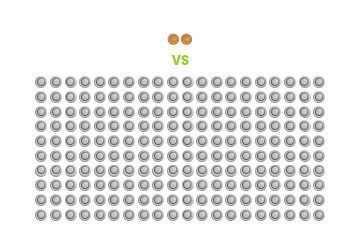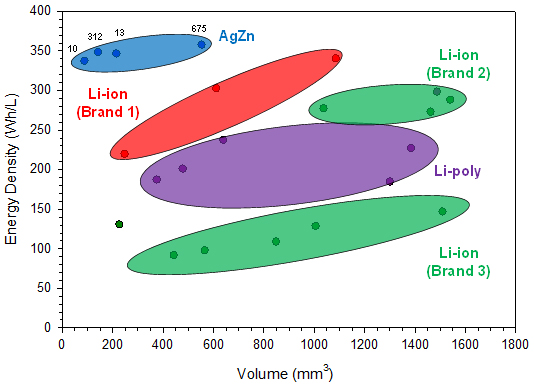Tag: zpower
The Looming Problem of Battery Waste in Wearables and How to Solve It
Jeffrey Ortega, Ph.D., Director of Research, ZPower
July 7, 2017 | According to the Environmental Protection Agency, Americans buy approximately three billion dry-cell batteries each year to power common household devices, including radios, toys, phones and computers. This volume creates nearly 180,000 tons of battery waste that is either recycled or ends up in landfills, where it can leach toxic chemicals into the ground and water supply. And while this number is staggering in and of itself, we live in a battery-powered world, and our need is only growing. Read more about The Looming Problem of Battery Waste in Wearables and How to Solve It …
Energy Density Comparison of Silver-Zinc Button Cells with Rechargeable Li-Ion and Li-Polymer Coin and Miniature Prismatic Cells
Jeff Ortega, Ph.D., Director of Research, ZPower, LLC
Ross Dueber, Ph.D., President and CEO, ZPower, LLC
Silver-zinc batteries have the highest theoretical specific energy (Wh/kg) and energy density (Wh/L) of all rechargeable battery technologies available commercially today. Rechargeable silver-zinc batteries have been successfully used for decades in military and aerospace applications where high energy and power density are required. The electrochemical reaction involves the oxidation of zinc to zinc oxide and the accompanying reduction of silver(II) oxide to metallic silver. The reaction at the AgO cathode involves a two-step oxidation (1.8 V and 1.5 V) of two water molecules to form hydroxide anions that migrate to the anode where they oxidize the metallic Zn to form the soluble zincate species before precipitation of the zinc oxide. Read more about Energy Density Comparison of Silver-Zinc Button Cells with Rechargeable Li-Ion and Li-Polymer Coin and Miniature Prismatic Cells …
Read more about Energy Density Comparison of Silver-Zinc Button Cells with Rechargeable Li-Ion and Li-Polymer Coin and Miniature Prismatic Cells …









